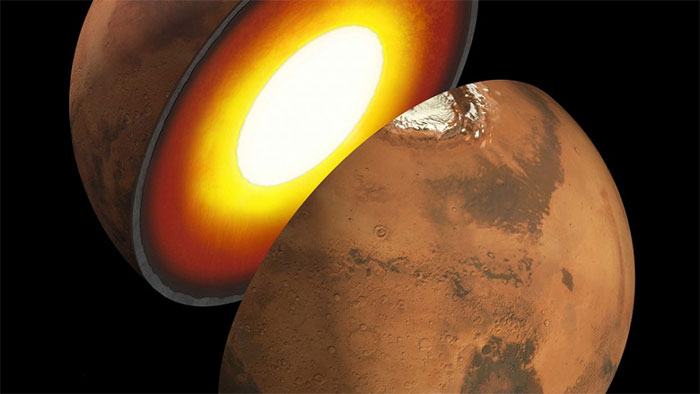Australian researchers have developed a new method to scan deep inside planets.
This method requires only a seismometer operating on the planet’s surface, utilizing technology similar to ultrasound scanning – which uses sound waves to obtain images of the patient’s body, to confirm whether the planet has a core. This seismometer will measure specific seismic waves generated by the vibrations of the planet’s surface.

Artist’s depiction of Mars’ core. (Image Source: NASA)
Scientist Hrvoje Tkalcic from the Earth Sciences Research Institute at the Australian National University (ANU), a co-author of the study, emphasized that this is a new method using a unique tool to scan inside any planet, which has never been applied before. The research team tested it on Mars, determining that the Red Planet has a core with a diameter of about 3,620 km.
According to co-author Sheng Wang, confirming the existence of a planetary core can help scientists understand the evolution of the planet’s past and future, including when the planet’s magnetic field formed and ceased. He stated that the model suggests that Mars’ core is liquid, primarily composed of iron and nickel, but may also contain small amounts of lighter elements such as hydrogen and sulfur. These elements could alter the thermal conductivity of the core.
For this reason, researchers hope this method can enhance our understanding of other celestial bodies, including the Moon.
This method is detailed in a report from the Australian National University.


















































